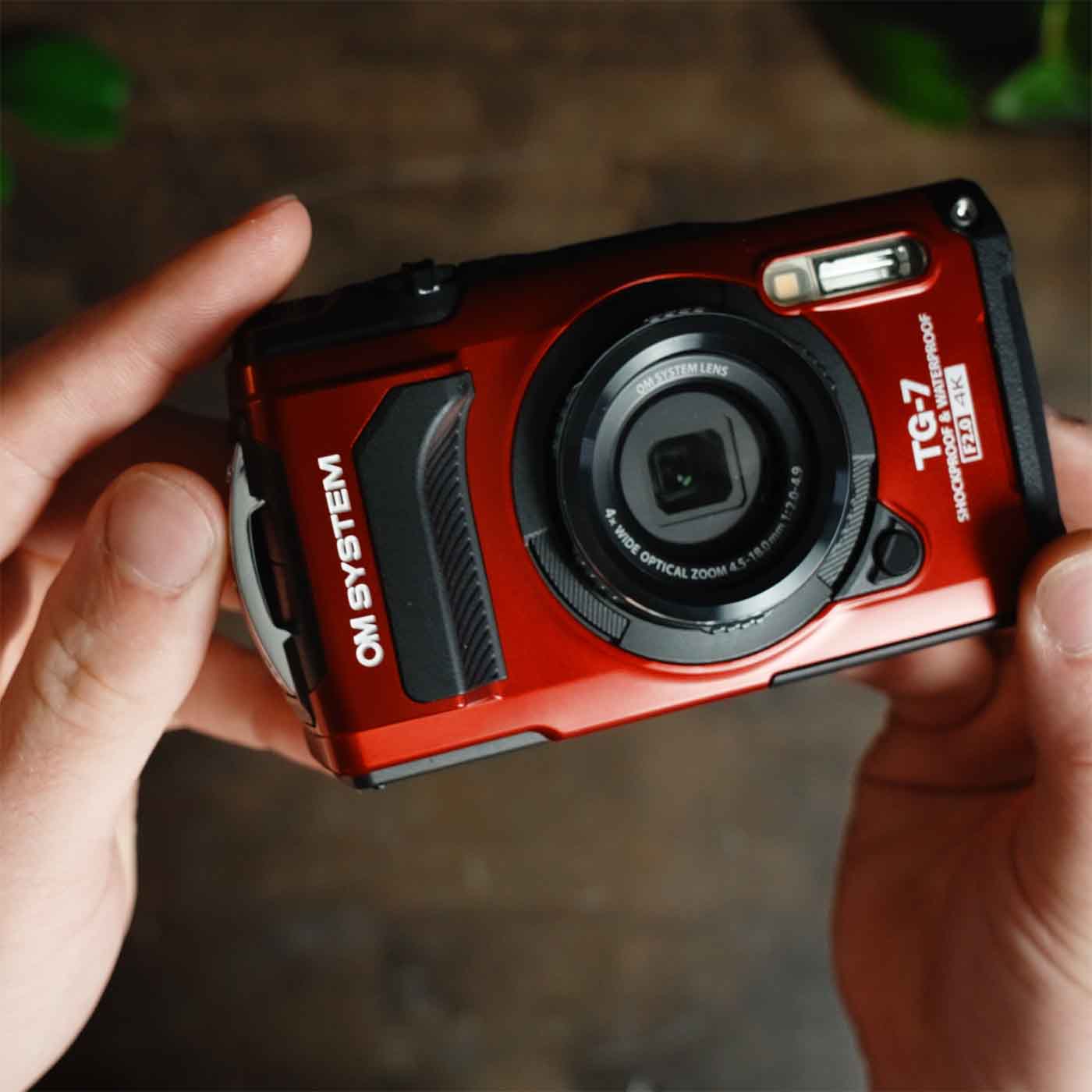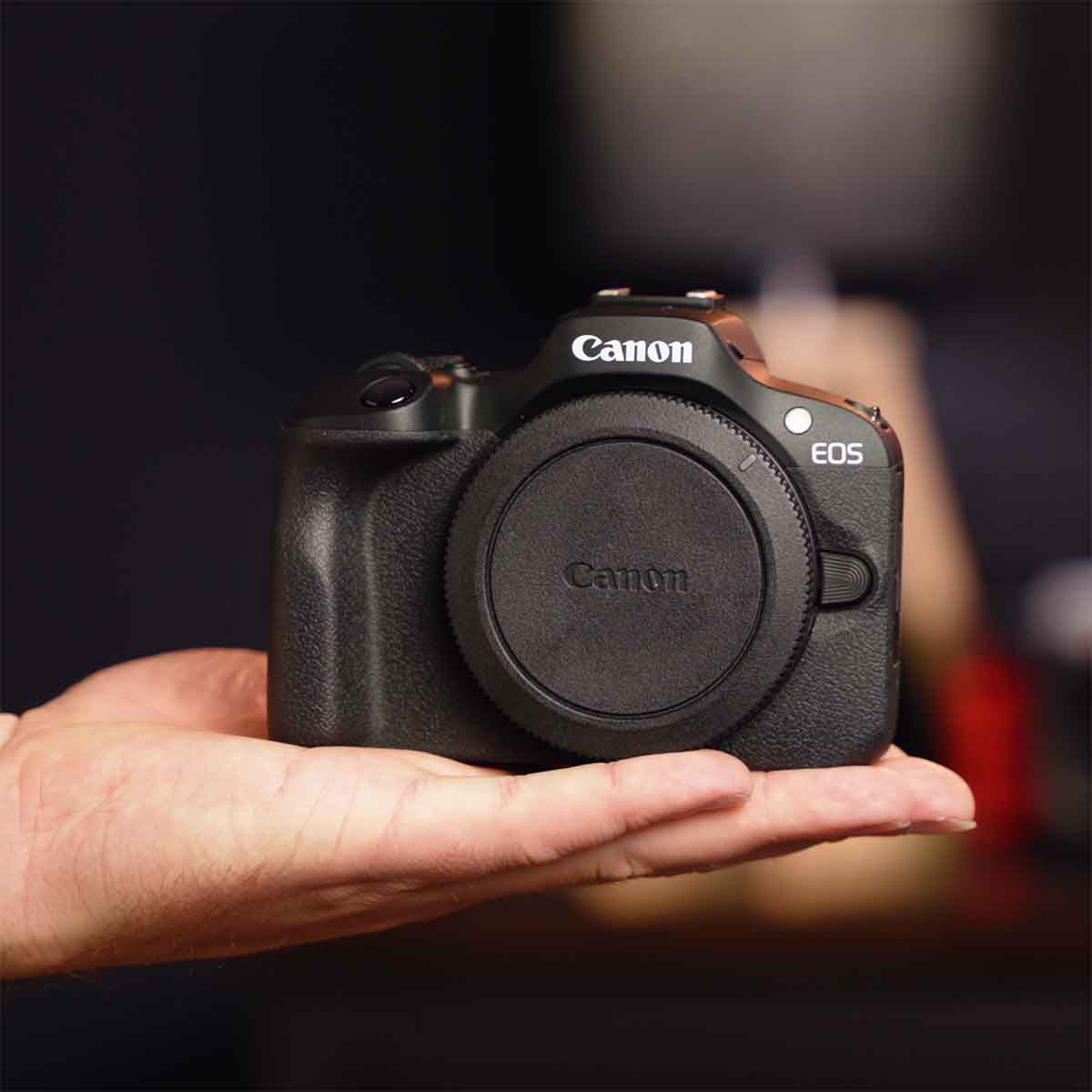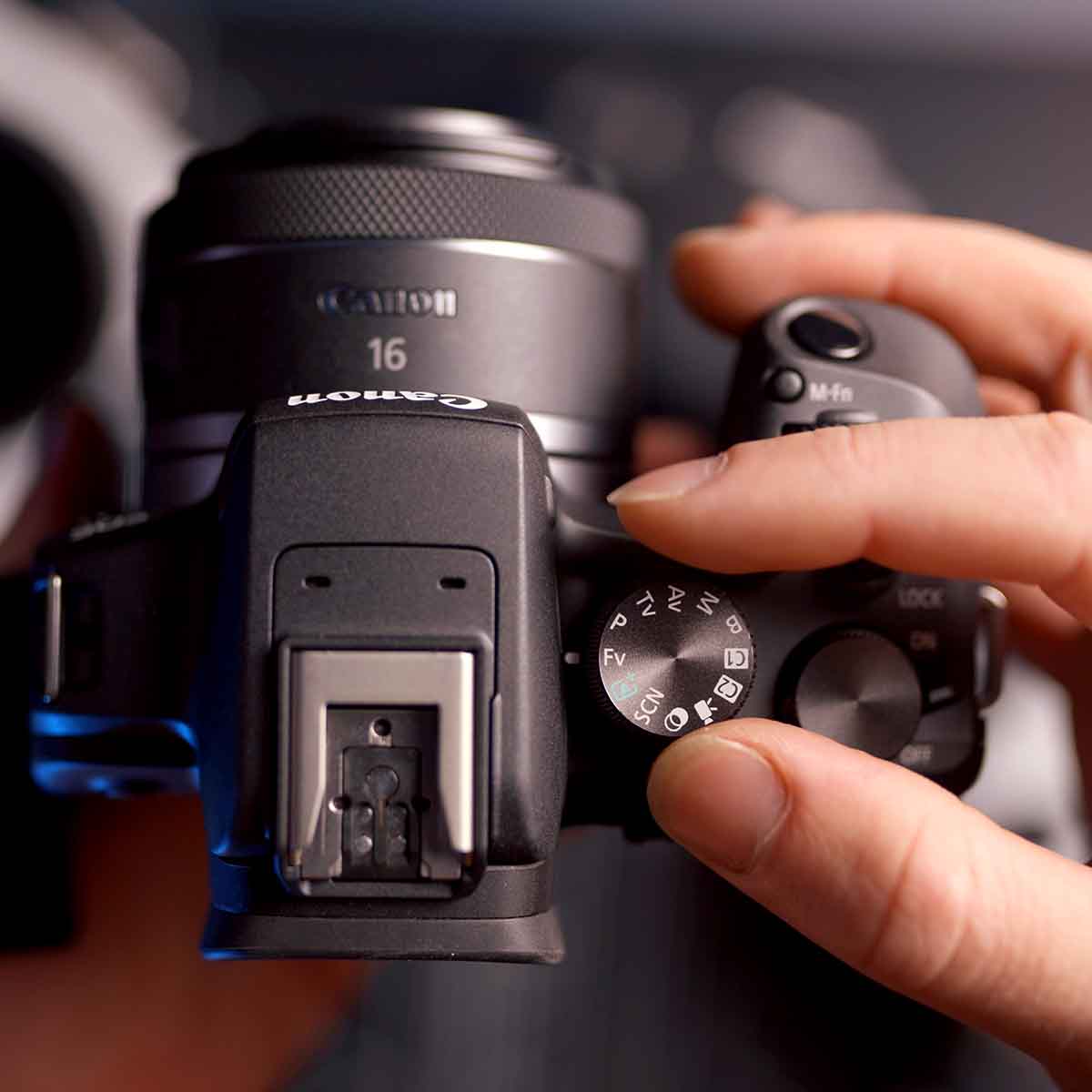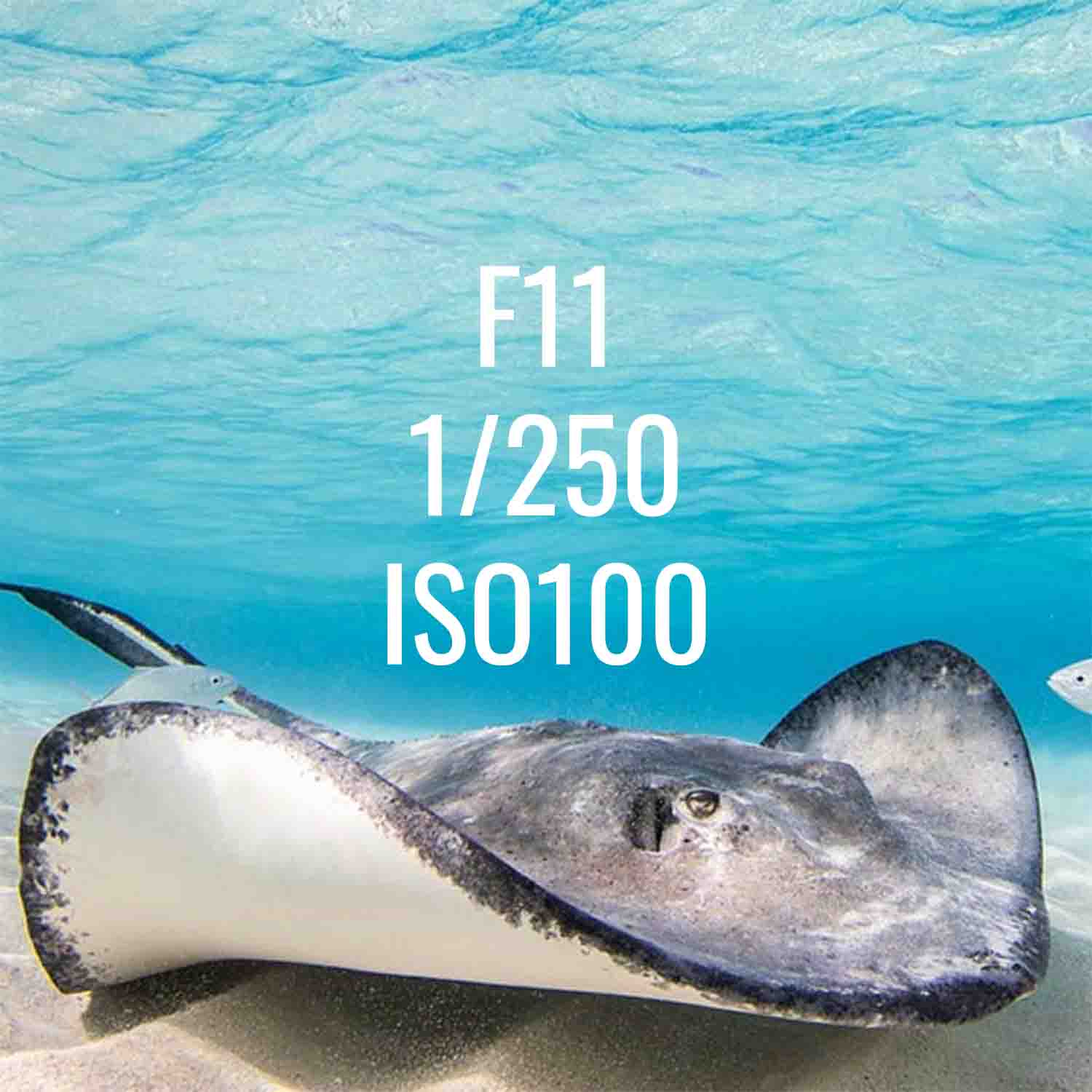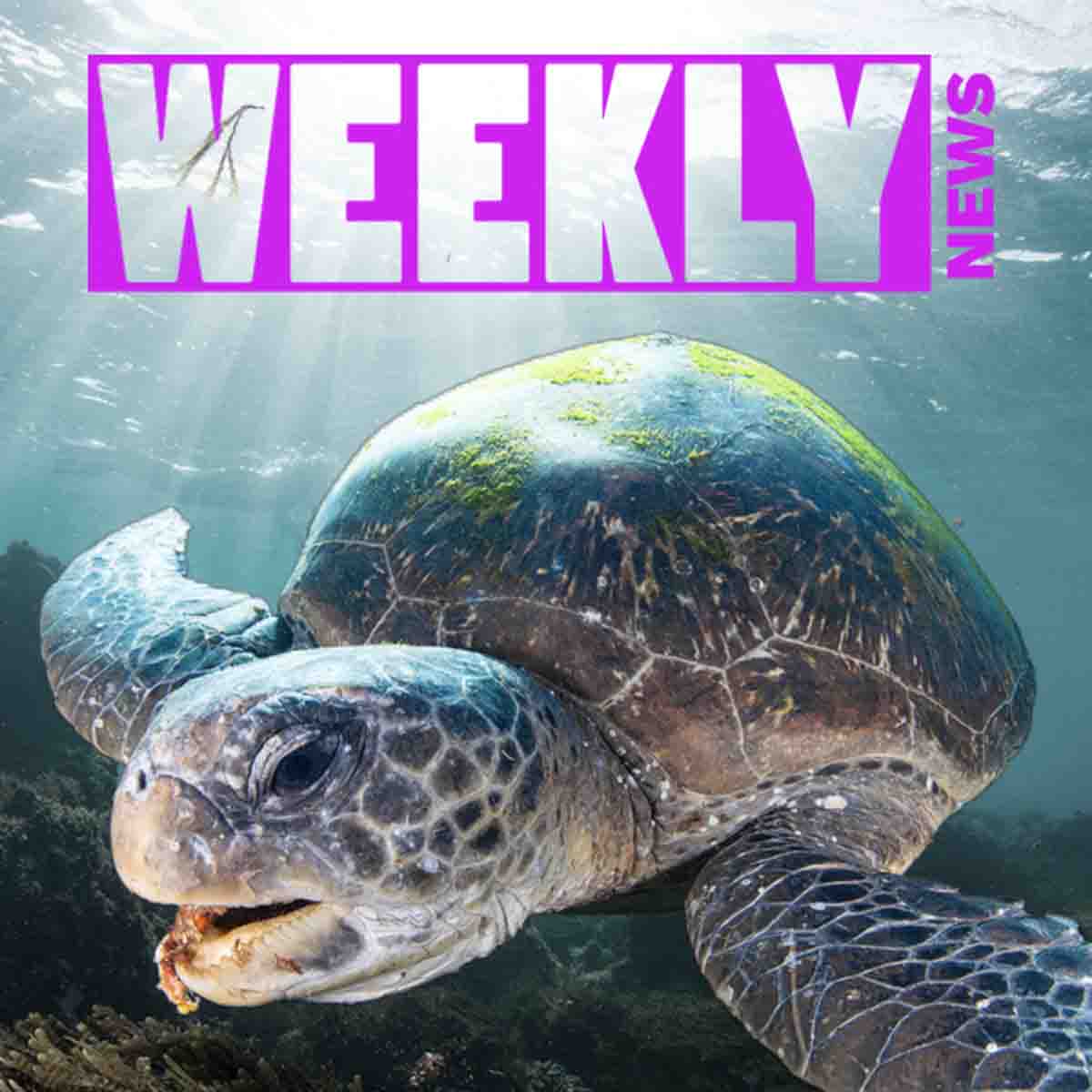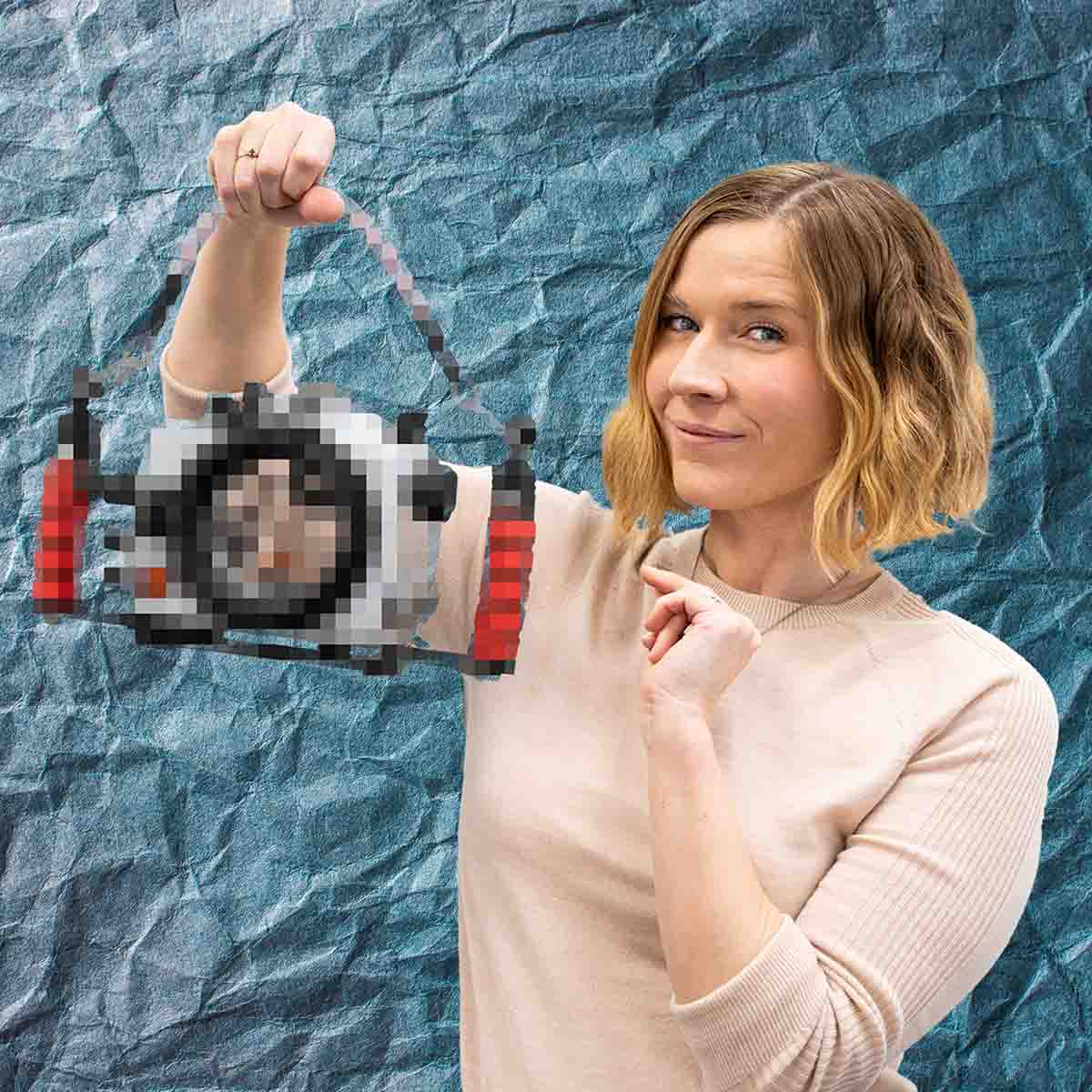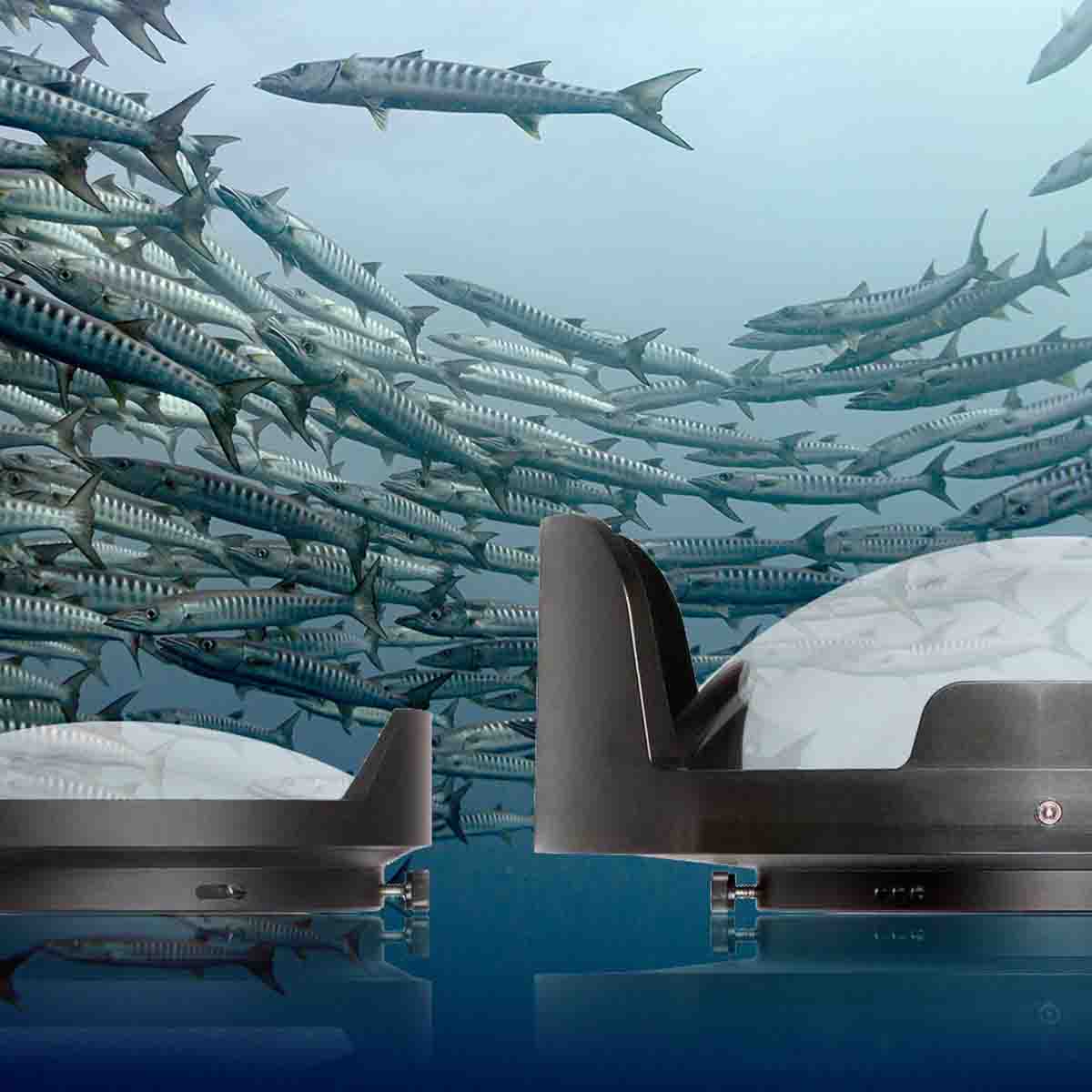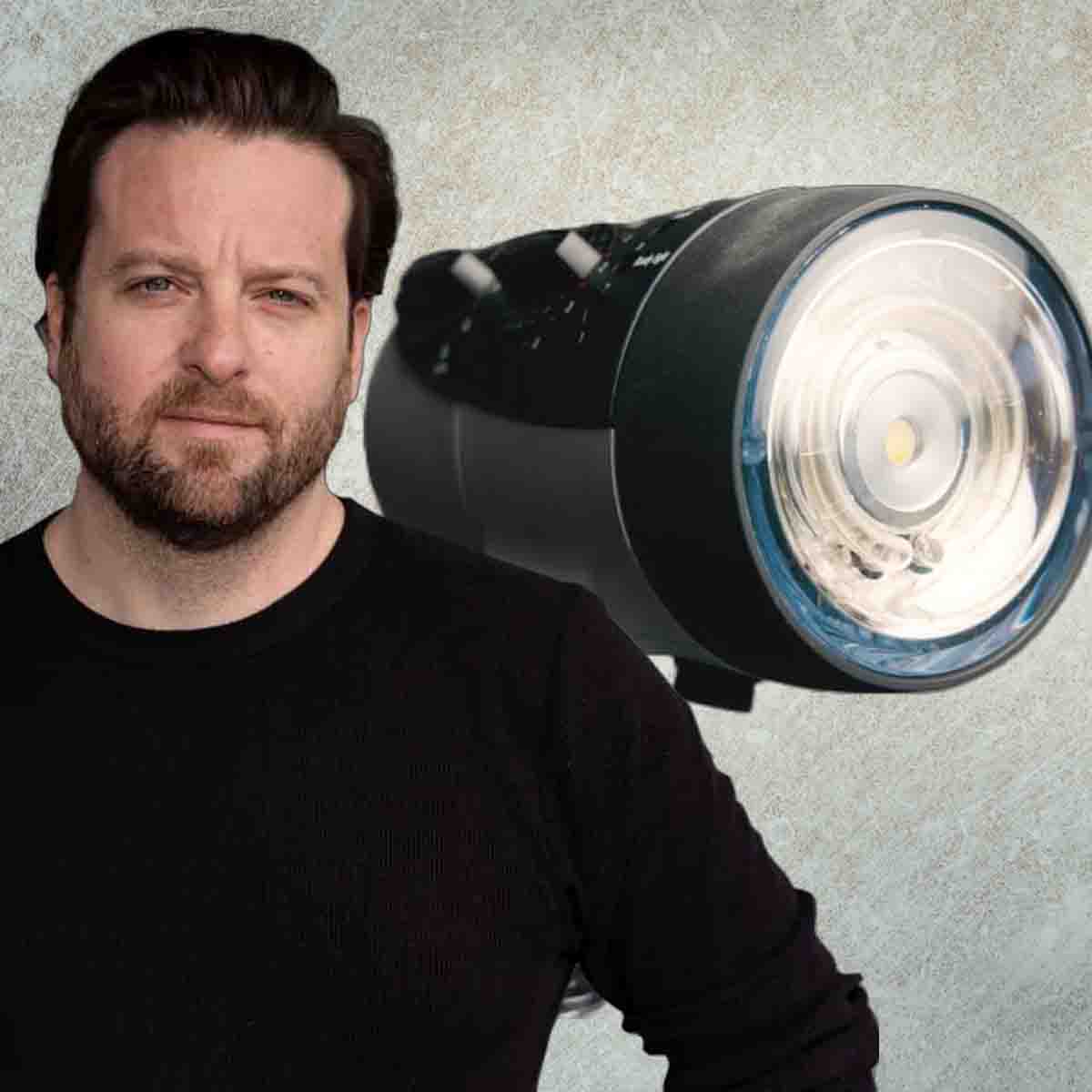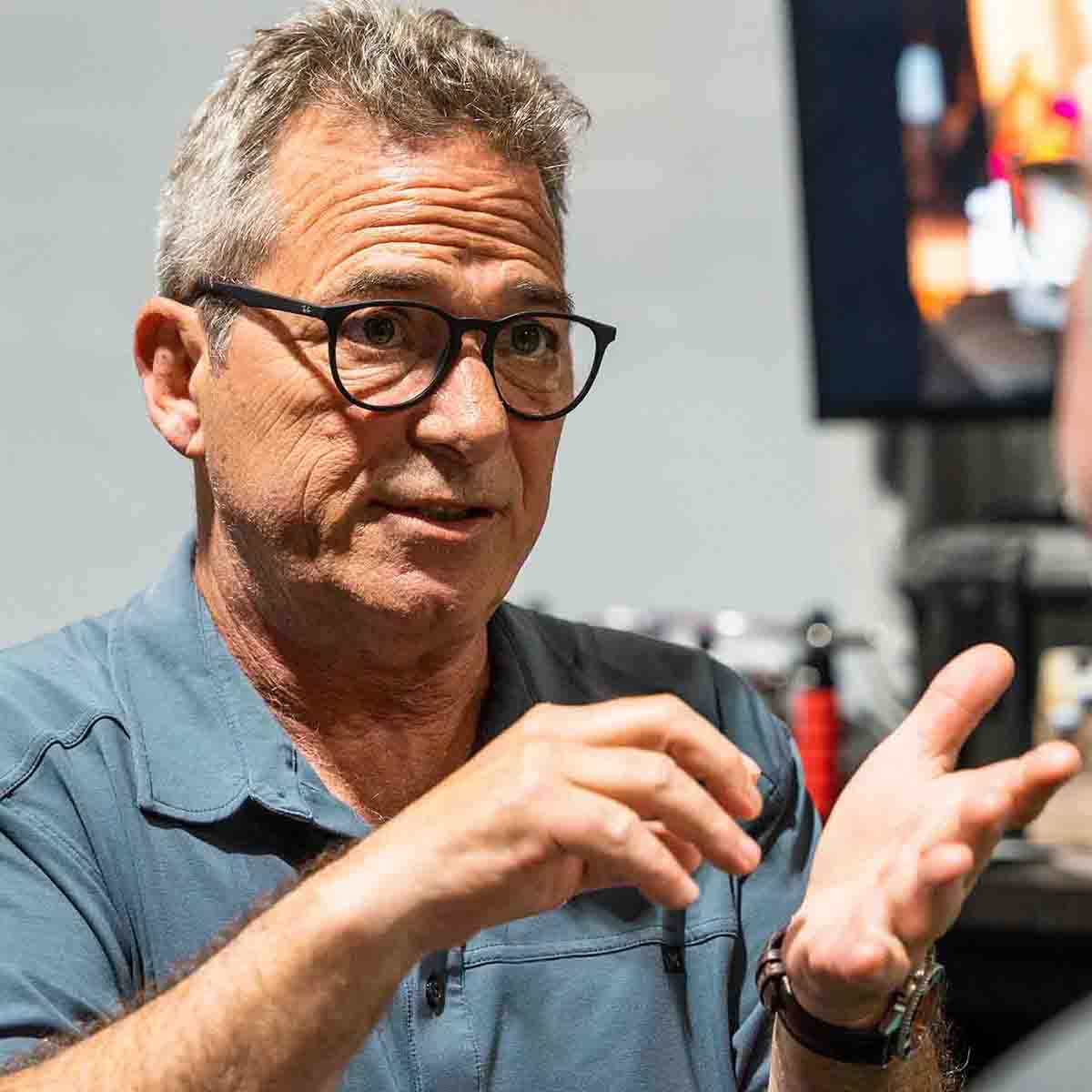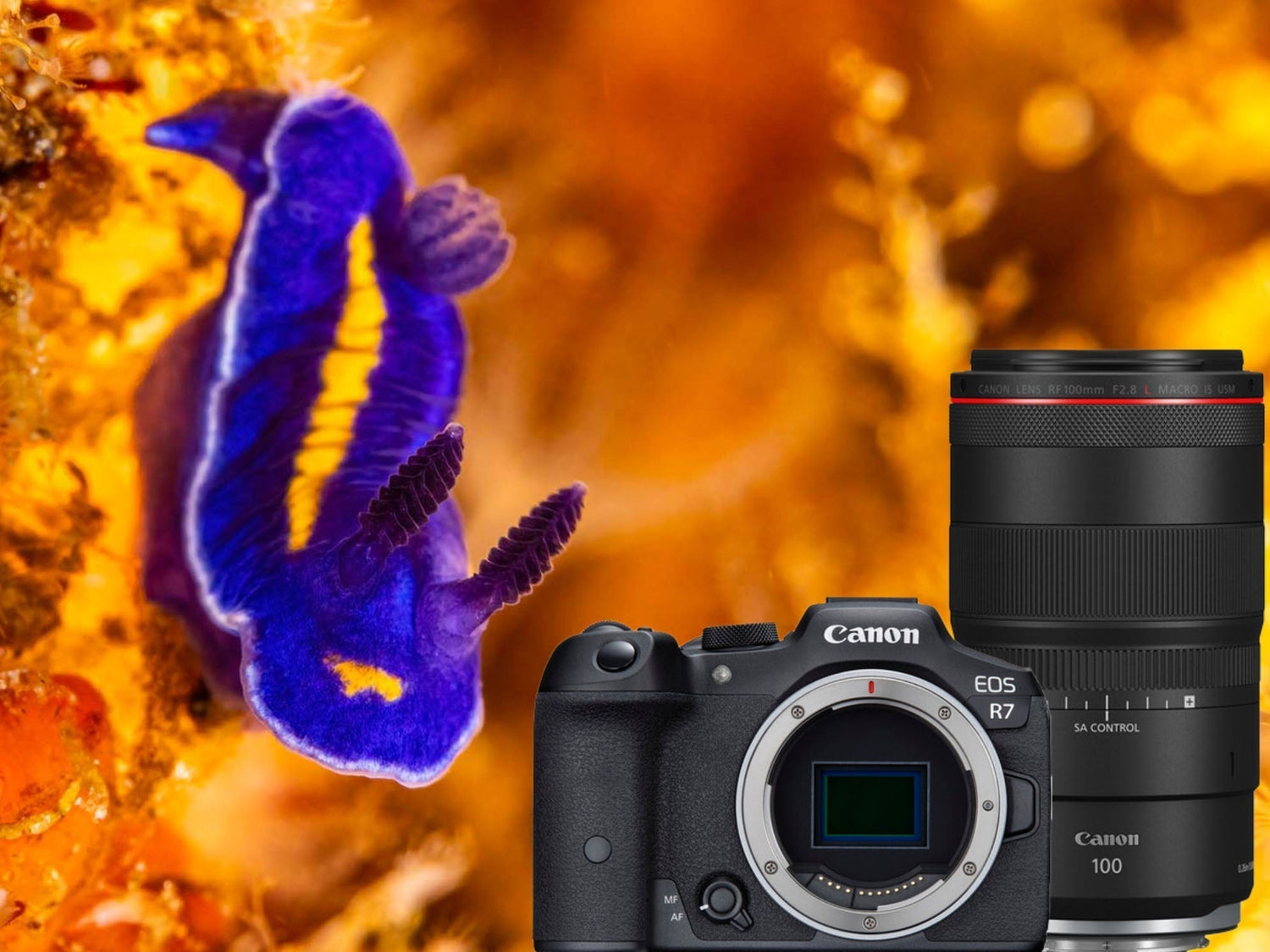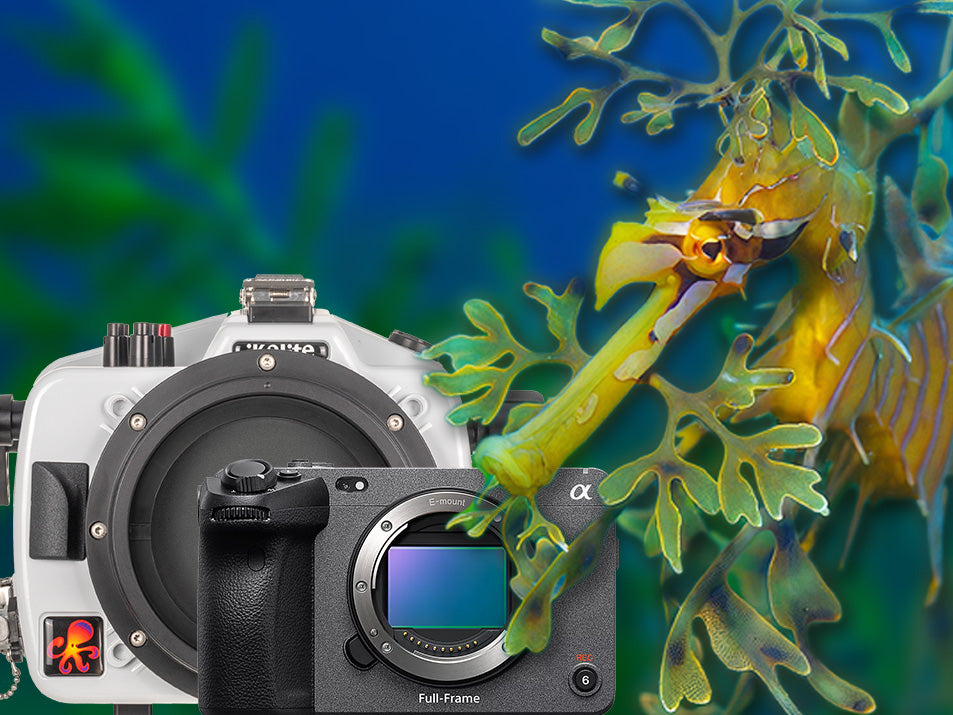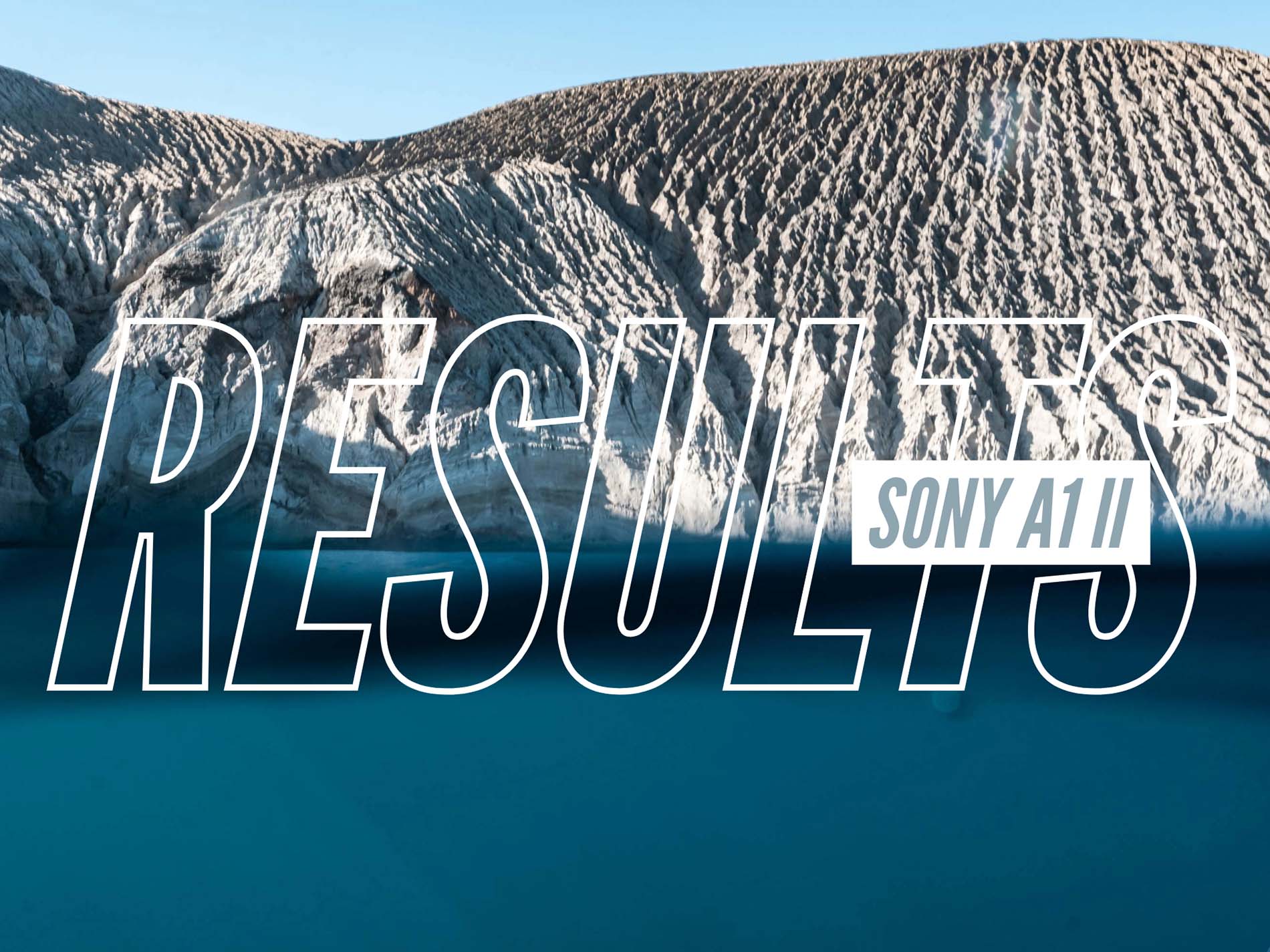By Douglas Klug
Typically I shoot with the old Canon EF 100mm f/2.8L Macro IS USM lens, which works perfectly with an EF-to-RF adapter on my Canon R7 mirrorless camera. On a recent trip to Bonaire I had the opportunity to try the native RF 100mm f/2.8L Macro IS USM lens for close-up work when I wasn’t shooting wide angle with the Sigma 10-18mm.

The Canon EOS R7 + RF 100mm f/2.8 lens are a perfect pair inside the compact and travel-friendly Ikelite 200DLM/D underwater housing # 69746.
Macro Shooting on Caribbean and Cold-Water Reefs
Bonaire’s beauty isn’t just about sweeping reef vistas and bright colors. There are dozens of subjects that are sized just-right for Canon’s 100mm f/2.8 L macro lens. This is a prime lens with no zoom, so all shooting is at 100mm.
The RF mount lens fits into the same DLM Flat Port 3.2 inch # 5516.51 and DLM 2.2 inch Port Extension # 5516.70 as the EF mount version with EF-to-RF adapter.
The lens offers incredibly fast autofocus and provides a 1:1.4 magnification at the minimum focus distance of just under 4 inches (101mm) off the end of the lens.
One of the hardest challenges on an autofocus lens is getting the lens autofocus to lock onto a subject that’s concealed behind or within substrate. The lens was able to easily track through the substrate to grab focus on the grunt and butterfly fish in the two images below.
 Grunt fish • f/13 • 1/160 sec • ISO 800 © Douglas Klug
Grunt fish • f/13 • 1/160 sec • ISO 800 © Douglas Klug
 Butterfly fish • f/11 • 1/100 sec • ISO 500 © Douglas Klug
Butterfly fish • f/11 • 1/100 sec • ISO 500 © Douglas KlugShooting underwater, the importance of how it lets light onto the sensor is important for showing off colors brought out by the strobes. Combined with DS232 strobes, the lens let the full range of colors through to the sensor, showing off the rope-sponge where this seahorse was hiding and the intricate colors where this Grasby was being cleaned.
 Seahorse • f/13 • 1/125 sec • ISO 800 © Douglas Klug
Seahorse • f/13 • 1/125 sec • ISO 800 © Douglas Klug
 Grasby cleaning • f/11 1/160 sec • ISO 800
Grasby cleaning • f/11 1/160 sec • ISO 800
The RF 100 lens works well as a “portrait” lens for medium sized subjects shot at farther distances.
 Butterfly fish • f/13 • 1/200 sec • ISO 640 © Douglas Klug
Butterfly fish • f/13 • 1/200 sec • ISO 640 © Douglas Klug
 Reef squid • f/11 • 1/160 • ISO 320 © Douglas Klug
Reef squid • f/11 • 1/160 • ISO 320 © Douglas Klug
As long the light from my strobes could reach the subject, the RF 100 lens will take great portrait like this butterfly fish or these Caribbean reef squid.
With its 1:1.4 magnification, the RF 100 lens excels at what most macro shooters would expect it to do… bringing small subjects to fill the frame.
 Jawfish • f/13 • 1/200 sec • ISO 200 © Douglas Klug
Jawfish • f/13 • 1/200 sec • ISO 200 © Douglas Klug
The RF 100 captures intricate details on small subjects like this male jawfish brooding eggs, the slender filefish hiding in a gorgonian, and the fairy basslet on the reef.
 Filefish • f/11 • 1/160 sec • ISO 800 © Douglas Klug
Filefish • f/11 • 1/160 sec • ISO 800 © Douglas Klug
 Fairy basslet • f/10 • 1/160 sec • ISO 800 © Douglas Klug
Fairy basslet • f/10 • 1/160 sec • ISO 800 © Douglas Klug
Back in the cold waters of California’s Channel Islands, I found the lens worked well to in the somewhat harsher shooting conditions that come with surge and colder, darker water. The RF 100 captured intricate details, like sharp rhinophores on nudibranchs, while allowing for that out of focus “bokeh” effect to make subjects like this juvenile calico bass pop out of the image.
 Nudibranch • f/11 • 1/160 sec • ISO 800 © Douglas Klug
Nudibranch • f/11 • 1/160 sec • ISO 800 © Douglas Klug
 Nudibranch • f/11 • 1/160 sec • ISO 800 © Douglas Klug
Nudibranch • f/11 • 1/160 sec • ISO 800 © Douglas Klug
 Juvenile Calico • f/11 • 1/160 sec • ISO 800 © Douglas Klug
Juvenile Calico • f/11 • 1/160 sec • ISO 800 © Douglas Klug
While I’m going to stick with my trusty old EF lens for the moment, if you’re newly investing in gear then the Canon RF 100mm F2.8L is a nice addition to any underwater photographers arsenal of lenses.
Additional Viewing
More Power, Smaller Package: Moving to Mirrorless with the Canon R7
Canon RF 100mm Manual Focus Gear Installation // 200DL Underwater Housing [VIDEO]
Canon RF 100mm Macro Assembly // Ikelite 200DLM/D Underwater Housing [VIDEO]
Colors in Cold Water: 6 Tips for Shooting Macro in Southern California
Digital Divers Dilemma: What to Shoot on a Caribbean Reef?

Douglas Klug has been diving California’s Channel Islands for over 30 years as a SCUBA diving instructor and underwater photographer in Santa Barbara, CA. Doug specializes in underwater photography within the kelp forest environment. His photo-essays have been published in print world-wide, including articles in California Diving News, DAN Alert Diver, and Dive Training. Doug’s images have been used in many publications and by the US National Park Service, US National Marine Sanctuary, the Monterey Bay Aquarium, Google, and Microsoft. Doug even does live talks on underwater photography for dive clubs and museums in Southern California. See more...


